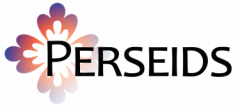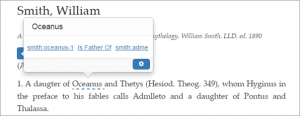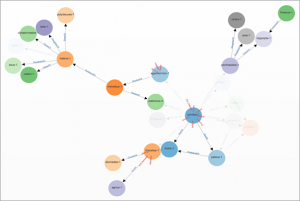Treebanking has distinct merit as a pedagogical tool. The entire process is useful for language learners of all levels, whether as an introduction to more complex sentence structure or as a practice exercise to hone skills. It can sometimes be challenging to convince educators to use treebanking tools, not because they cannot see the merit, but rather because they are concerned about being able to use the tools effectively. They may feel they lack the technical ability to manipulate the data, files, and annotation platform. We want educators to have confidence in their ability to use the tools and teach others to do the same. Treebanking with Perseids and Arethusa is fairly simple, and most people will learn how to use these tools by sitting down and using them.
With this in mind, I set myself to answering another question I continue to get each time I introduce new teachers to treebanking, “what do I do with all this data?” With Perseids we want to empower users to own their data. One avenue would be for teachers to connect with projects which aggregate treebanks, with the hopes they might turn each classroom into part of a larger crowdsourcing project. However, larger treebanking projects prefer tagsets based on international standards for dependency grammar, which are sometimes unintelligible to the average student of Greek or Latin and can be overwhelming. For this reason, we designed Arethusa to give users the ability to customize the tagsets to coincide with the grammars and map to textbooks they are already familiar with.
Along the same lines, we want to put in the end-users hands the ability to publish their work themselves, whether they’ve used a standard tagset for their annotations, or a customized version, and to then extend their publications with other resources as appropriate for their choices. The work we did with Professor Matthew Harrington’s Latin AP Pedagogical Treebanking project allowed us to explore how we might use GitHub to support this. We can take advantage of the services GitHub provides freely for publishing versioned repository resources as web sites, and for connecting with Zenodo to assign digital object identifiers (DOIs) to these resources. We developed a customization of a Jekyll theme with predefined templates for displaying treebank data in a GitHub pages site. Perseids users can download their treebank files directly from Perseids and import them into a GitHub repository using this theme. This allows users with minimal technical expertise to easily get a site up to publish and display their work.
The way this works is simple. Users download their treebank data, add them to their GitHub repository and then create html files for each tree that contain just a small .yaml header (which we call ‘tbpages’). Jekyll uses this .yaml header to populate a table of all the trees in the collection on the main page, as well as a display page for each individual tree. The theme uses a widgetized version of the javascript-based Arethusa application to display interactive representations of the trees. The Arethusa widget runs in the page served by the GitHub pages site and and retrieves the tree data directly from the underlying GitHub repository. The only dependency on Perseids is for retrieval of the tagset data files, although these can be configured to reside locally as well.
The goal was to create something that people could use with a minimal understanding of the underlying technology. Users with a little more technical expertise can explore the options Jekyll offers for additional customizations. Setting the whole thing up as a theme allows for us to roll out improvements to the widget and distribute them to our users in an easy way. Bringing together the widget and the Jekyll theme, we created the Gardener Theme, which allows users to plant gardens for their collections of trees.
One of the initial goals of the project was to document the pedagogical techniques that we have seen work with the Perseids Project in classrooms around the world. Additionally, the project was intended to help students experience having their work published. Gardener was designed not just to be easy to use, but to be flexible enough to facilitate publishing both trees and associated student work. Jekyll only needs to read the .yaml header to generate the page, the rest of the tbpage file can contain whatever additional content the user wishes. In talking with educators, we found that response essays or analytical write ups are commonly used as a way to assess the skills learned via the creating the treebank. If a classroom used this theme to publish their work, each published page could also contain essays which would help explain the shape of the trees. This creates a fantastic place for students to display work and create fixed proof of their skills in Greek and Latin.
We are pleased to announce that the first open version of the Gardener Theme is now up and running. Go and check out our demo blog here or fork the theme and get started here. And don’t forget to send us feedback!


